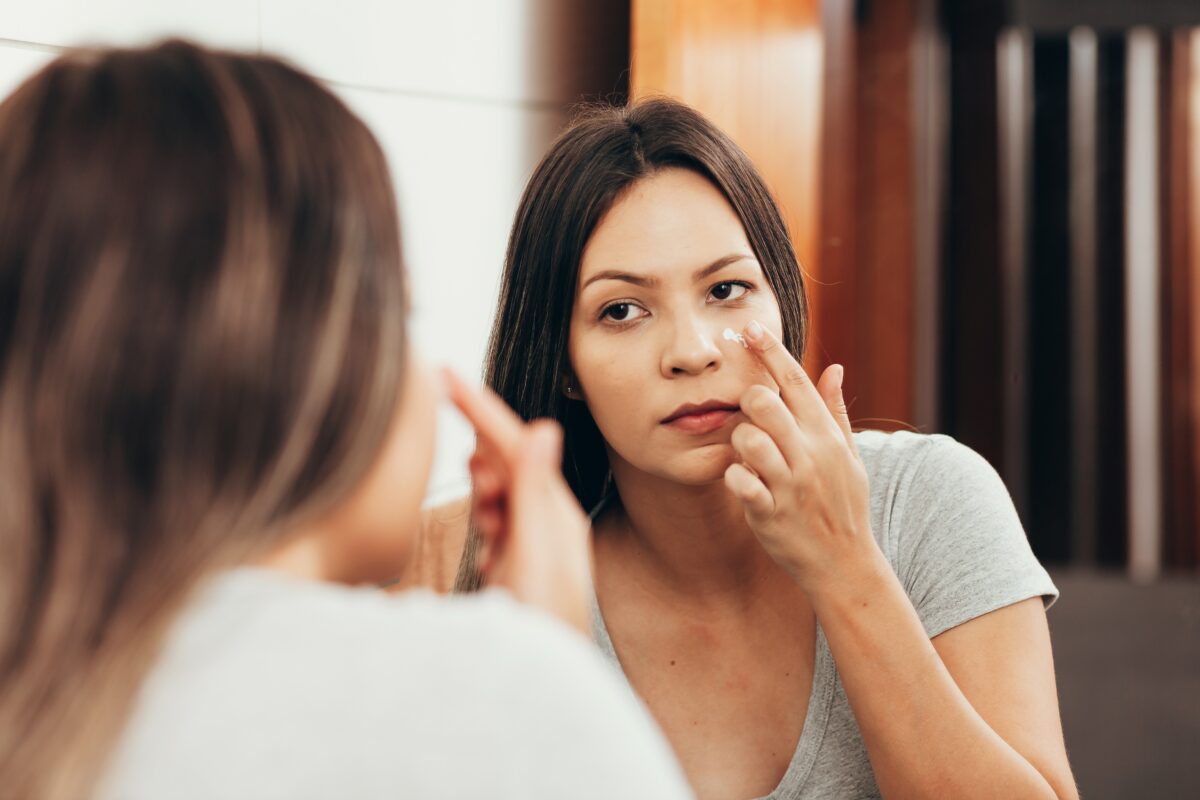
Tainted beauty products more prevalent in some communities and in imported shipments
She had been buying face cream through a friend of a friend for 12 years. This time, it was Ponds “Rejuveness,” a version of the companys anti-wrinkle cream that is made and sold in Mexico.
But someone in the Mexican state of Jalisco had laced the cream with a toxic skin-lightening compound, and it had a devastating effect on the 47-year-old Sacramento resident.
She showed up at the emergency room this summer slurring her speech, unable to walk or feel her hands and face, public health officials said. She now lies semi-comatose in a hospital.
Authorities arent releasing her name, but they say she is the first known victim of methylmercury poisoning from a cosmetic in the United States.
Methylmercury is a heavy metal used in things like thermometers, batteries, and mirrors, and long-term exposure can cause kidney damage, loss of peripheral vision, and lack of coordination.
The chemical—along with a less potent, but still toxic, form of mercury known as calomel—is also a key ingredient in skin-lightening products. A bustling market for these products is driven by immigrants who buy them from their home countries.
The face cream that sickened the Sacramento woman was tampered with after manufacture, but some other skin-lightening products made overseas intentionally contain mercury as an active ingredient, said Bhavna Shamasunder, an associate professor at Occidental College in Los Angeles who studies skin-lightening cosmetics. While mercury removes skin pigmentation, Shamasunder said, the side effects are toxic.
Ponds, owned by the international consumer products giant Unilever, said it doesnt use mercury in its products. It encourages consumers to buy their products only from authorized retailers to avoid tampering. The company said it is working with authorities to investigate the Sacramento womans case.
In the past nine years, there have been more than 60 poisonings in California linked to “foreign brand, unlabeled, and/or homemade skin creams” that contained calomel, Sacramento County officials said.
While it is illegal to sell cosmetics in the United States with more than 1 part per million (ppm) of mercury—except eye products, which can have up to 65—the Food and Drug Administration cant keep up with the imports, whether theyre shipped, tucked into suitcases, or purchased online.
Nor does it have the regulatory power to enforce recalls or require preapproval of cosmetic products and ingredients before theyre sold, Shamasunder said.
“The FDA has extremely poor oversight over our beauty products,” she said. “The burden of proof is on the consumer to get sick first.”
The FDA declined to comment on the record for this story.
Skin-lightening products are popular throughout the world, and the market is projected to grow to $31.2 billion by 2024, according to Global Industry Analysts, a publisher of market research.
Products made outside the United States arent subject to the same standards as U.S.-made ones and may contain poisonous chemicals, like mercury, or have higher proportions of potentially dangerous ingredients, such as steroids.
Skin-lightening products are advertised for their ability to even out blemishes and skin tone, but some consumers feel pressure to use them on their whole face or body in cultures that tend to confer more money and social status on people with lighter skin.
Nearly 40 percent of women surveyed in Taiwan, Hong Kong, Malaysia, the Philippines, and Korea said they used skin lighteners, while 77 percent of women in Nigeria and 25 percent in Mali said they did so, according to the World Health Organization.
In the United States, potentially hazardous skin-lightening products can be purchased in some ethnic beauty stores, in ethnic supermarkets, and at swap meets. They can even be found online at sites like Amazon and eBay.
Its difficult to estimate how many people have been affected by mercury poisoning from cosmetics because screening for the heavy metal isnt routine, said Tracey Woodruff, a professor of reproductive sciences at the University of California–San Francisco.
But the problem appears to be concentrated among certain ethnic groups. A recent Minnesota study measuring mercury in the urine of 396 pregnant women from 2015 to 2017 revealed that nine had elevated levels, mostly linked to skin-lightening product use among Hmong and Latina women. Ongoing testing is revealing even more cases, said Jessica Nelson, program director for the states biomonitoring project.
Often, victims of poisoning get their spiked products from people they trust, Woodruff said.
Woodruff co-authored a report about a pregnant woman in San Francisco who had unusually high levels of mercury in her blood. The source was a jar of Ponds face cream that had been adulterated in the Mexican state of Michoacán.
“A family member gave it to her, so it was a trusted source of information,” Woodruff said.
A 2013 study that sampled 367 skin-lightening products purchased in Chicago, Los Angeles, New York, and Phoenix turned up at least a dozen products with exceptionally high levels of mercury, ranging from 1,729 ppm to 38,535 ppm.
In the Sacramento womans case, the contaminated face cream contained a methylmercury concentration of more than 12,000 ppm. The level of methylmercury in her blood was 2,630 micrograms per liter, according to Sacramento County Public Health. Normal values are less than 5.
Its unclear whether the FDA could have done anything to preventRead More – Source





